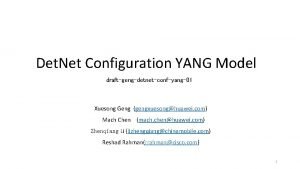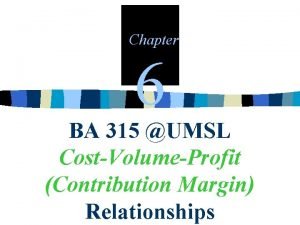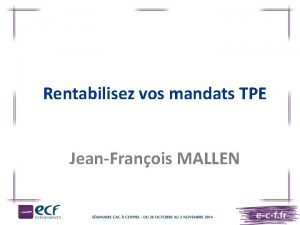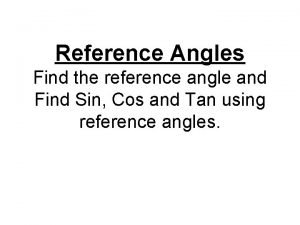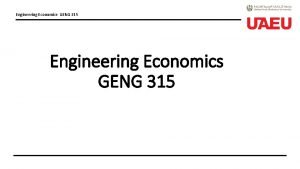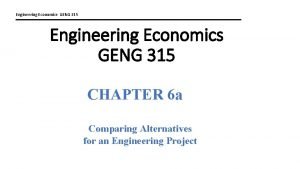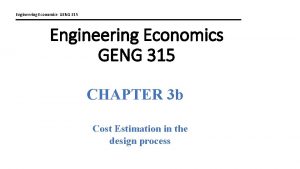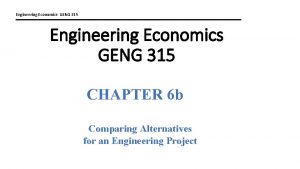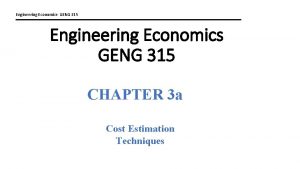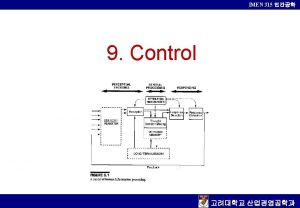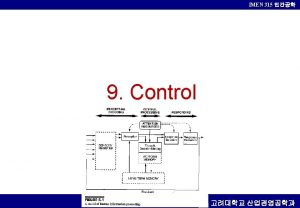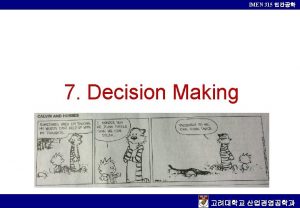Engineering Economics GENG 315 Engineering Economics GENG 315















- Slides: 15

Engineering Economics- GENG 315 Engineering Economics GENG 315 CHAPTER Entrepreneurship The Business Plan, The Financial Plan

Engineering Economics- GENG 315 Objectives 1. Define Entrepreneurship 2. To discuss different elements of a Business Plan 3. To discuss how to build a Financial Plan/ Financial Statement.

Engineering Economics- GENG 315 Entrepreneurship q Entrepreneurship is the private enterprise, venture, or business. q The purpose of any business is to create a value to its customers and a profit for its owners. q The business model tells a story about the customer and the value proposition that leads to a profit.

Engineering Economics- GENG 315 Entrepreneurship – The Business Plan

Engineering Economics- GENG 315 The Business Plan § Business plan is a document describing the opportunity, product, context, strategy, team, required resources, financial return and harvest of a business venture. § Business plan is used for attracting resources and talented individuals to the project. § A single entrepreneur might not need a written Business plan if he is using his own resources. However, he still will benefit from written Business plan by showing it to an advisor to shape a better plan. § If the project requires outside financing, a written Business plan will be required by most investors.

Engineering Economics- GENG 315 The Business Plan 1. Many small businesses starts with a simple Business Plan and build it up over the first months after launch. 2. Business Plans need to be updated periodically. 3. Most Business Plans number 10 -20 pages with backup and supporting material available on request. 4. After the Business Plan is outlined and drafted, a brief executive summary (1 -3 pages) is written. This might be sufficient to initiate discussions with the investors. 5. Working through creating a Business Plan will enable the entrepreneurs to

Engineering Economics- GENG 315 Business Plan Road Map Entrepreneurs are advised to follow the following five steps Road Map to build a business: Opportunity Solution: Product or service Context, strategy, and time horizon Organizational financial and other resources available or needed Financial return to participants and the risks

Engineering Economics- GENG 315 Elements of Business Plan (10 – 20 pages) Executive summary (1– 3 pages). n Opportunity: quality, growth potential. n Vision: mission, objective, core concept. n Product or service: value proposition, business model. n Context: industry, timelines, regulation. n Strategy: entry, marketing, operations, market analysis. n Organization: structure, culture, talent. n Entrepreneurial team: capabilities, commitment. n Financial plan: assumptions, cash flow, profit. n Required resources : financial, physical, human. n Uncertainties and risks. n Financial return: return on investment (ROI = Net Income ÷ Investment). n Harvest: return of cash to investors and entrepreneurs. n

Engineering Economics- GENG 315 Elements of Business Plan The following figure shows that the business plan serves as the alignment tool for a new business venture. Opportunity Customer, Strategy, Business model Deal Rewards and risks, Incentives, Ownership, Harvest Business plan People The team, Capabilities, Attitude, Reputation Resources Financial, Physical, Intellectual

Engineering Economics- GENG 315 Ten common mistakes or gaps in Business Plan 1. Not suitable solution or technologies looking for a problem. 2. Unclear or incomplete business model or value proposition. 3. Incomplete competitor analysis and market plan. 4. Inadequate description of the uncertainties and risks. 5. Gaps in capabilities required of the team. 6. Inadequate description of revenue and profit drivers. 7. Limited or no description of the metrics of the business. 8. Lack of focus and sound mission. 9. Too many top-down assumptions such as assuming a certain market share for the business. 10. Limited confirmation of customer demand.

Engineering Economics- GENG 315 Entrepreneurship – The financial plan (Financial Statement)

Engineering Economics- GENG 315 The Financial Plan (Financial Statement) § Entrepreneurs build a Financial Plan to determine the economic potential for their business. An Income Statement (Revenues, Expenses, and Profits/Losses) and a Balance Sheet (Assets, Liabilities, and Equity) are also required to demonstrate profitability and liquidity. § The financial plan is based on estimates regarding sales Revenues and Costs. Using these estimates helps in calculating the number of units need to be sold to breakeven. § Monthly cash flow is needed over a two or three years period to identify the cash investment required. The best ventures grow sales consistently and provide cash flow and profit early in their useful lives.

Engineering Economics- GENG 315 Building a Financial Plan The basic accounting formula is: Equity = Assets - Liabilities Where: • Assets: what the company owns, usually divided into certificates called common or preferred shares of stock. • Liabilities: what the company owes to others. • Equity: The company’s Net Worth, often called Accounting Value. • New firms should select two or three parameters of the business that display the greatest impact on the cash flows. Examples are sales growth rate and new customers acquisition rate. • They should then test the changes in sales as each of these parameters is changed.

Preferred Stocks Versus Common Stocks Feature Ownership of Company Voting Rights Price of Security Is Based on: Dividends Value if Held to Maturity Order Paid if Company Defaults Common Stocks Yes Earnings Varies Third Preferred Stocks Yes No Earnings Fixed Full Second Bond No No S&P Fixed Full First

Engineering Economics- GENG 315 Building a Financial Plan The given figure shows that assets generate income and liabilities lead to expenses. The net income is income minus expenses. Assets Values of items owned Liabilities Value of items purchased, borrowed, or leased Income Expenses - + Net income



